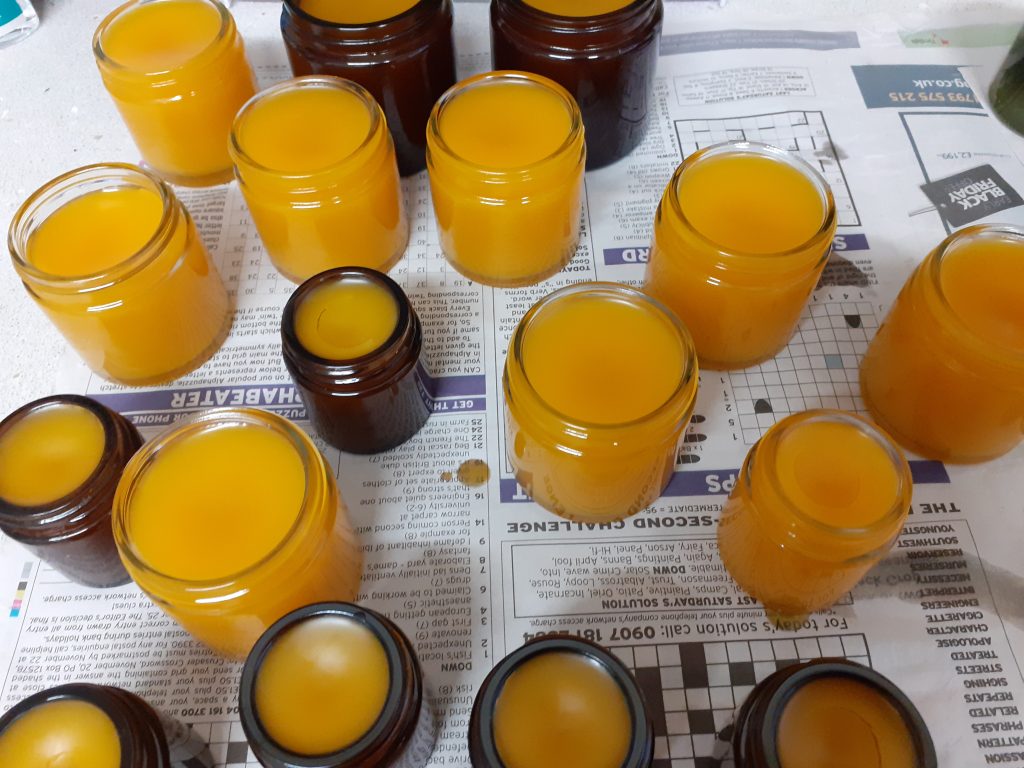Uncategorized
A Herbalists Diary Jan 2022
A Herbalists Diary Jan 2022
By Carol Burnett, Medical Herbalist BSC NIMH

There’s not much to forage, now that it’s the depths of winter. Perhaps some roots could be dug up if you are hardy and know where to look (a few hips and haws remain, but the birds need them). Much more pleasant to stay indoors and make plans and potions.
It’s lovely to make marigold ointment this time of year. The rich yellow brings a bit of summer sun into a grey day. It’s the end of a long process, beginning with planting the seed in Spring. If you have grown marigolds before, you may be lucky and see some popping up in the same place you grew them originally.
The old-fashioned pot marigold (Calendula officinalis) is, in fact, highly medicinal. There are a lot of ornamental cultivars, like French marigolds, but this is the one to grow. Once the flowers start to appear, I pick them almost daily. The more you pick, the more flowers the plant gives you. You can then lay the flowers on an airy rack to dry.
To make an ointment, you begin with making an infused oil. You can use fresh plant material, but I tend to use dry material to make sure there won’t be any spoilage from water content. I then pack the flowers into a kilner jar and cover them with oil (olive or almond are both lovely oils for the skin).
The jar is then left in a sunny spot– the longer the better. This gives lots of time to contemplate the recipe and all the uses that calendula has.
My favourite word for calendula is healing! It is known as a vulnerary by herbalists, which means a wound healer. It heals all that it touches really. This is partly due to being full of lovely sticky resin, as you will notice if you pick the flowers. As a herbal tea, a few flowers thrown into a pot will help heal your gut if you have got inflammatory digestive issues, and it mixes nicely with chamomile. Both of these herbs have gentle bitter elements which help the digestion. Calendula tea will get the lymphatic system moving, which is part of the immune system.
A word of caution—Pregnant mums should not drink the tea, to be on the safe side. The tea could also be used as a wash for any sore or inflamed skin, including sunburn. You could also use it as a foot bath for athlete’s feet due to the antifungal properties. A few drops of tea tree essential oil would be a good addition!
As a cream or ointment it’s one of the most useful things to have on hand, being soothing, healing, antibacterial, antifungal and gentle enough to use on the youngest of children. Indeed, it’s great for babies’ sore bottoms and Mum’s sore nipples.
I strain the oil at the end of the summer, after leaving the oil and flowers to infuse, producing a rich golden oil ready for ointment or cream making. It could be used just as it is. The ointment is the last step and very simple to make. Just warm the oil in a double boiler and add some beeswax to set it.
Once it is cool, a few drops of lavender and chamomile essential oil can be added. Then the ointment can be poured into pots. Simple and magical! This year’s batch of oil had a particularly deep yellow orange colour, telling me it’s extra healing. If you would like to read more about this amazing herb, look here:
Calendula Officinalis – Herbal Encyclopedia (cloverleaffarmherbs.com)
If you would like to buy some ointment, head on down to Nether Edge Herbarium.
